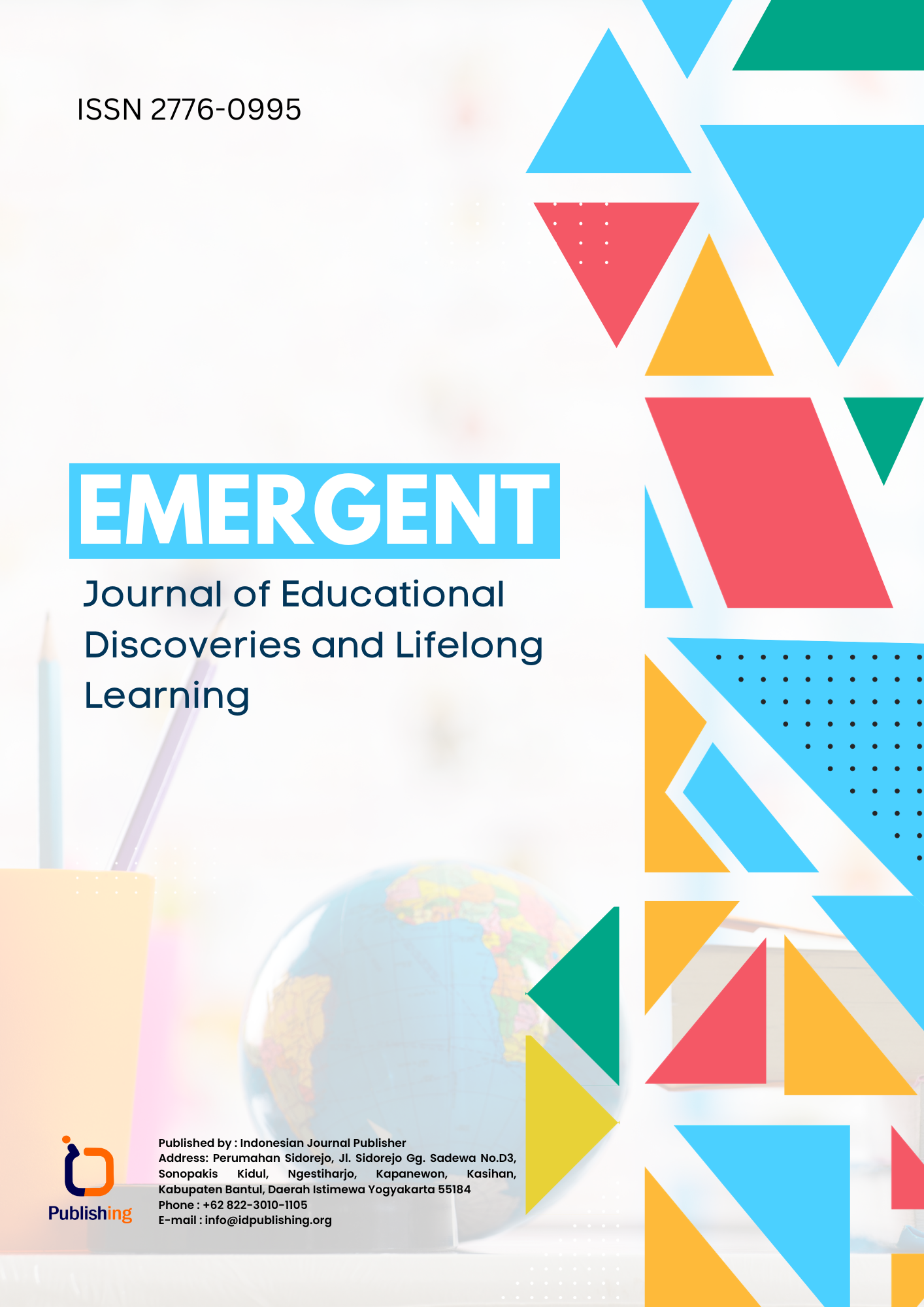The Depictions of Psychological Conflict In “Middlemarch” by George Eliot
DOI:
https://doi.org/10.47134/emergent.v3i4.46Keywords:
“Middlemarch”, Psychological Conflict, George Eliot, Dorothea Brooke, Tertius Lydgate, Moral Dilemmas, Social Expectations, Free Indirect Discourse, Psychological Realism, Victorian LiteratureAbstract
This article explores the portrayal of psychological conflict in George Eliot’s “Middlemarch”, focusing on the inner struggles of key characters, particularly Dorothea Brooke and Tertius Lydgate. Eliot's detailed psychological realism presents the complexity of human emotion, moral dilemmas, and internal battles with social expectations. The narrative examines how personal ambitions clash with societal roles, creating a web of inner turmoil that affects each character’s decision-making and development. Through close textual analysis, the article demonstrates how Eliot's use of free indirect discourse and deep psychological insight shapes the narrative and enhances the reader’s understanding of the characters’ moral struggles. By exploring these internal conflicts, the article aims to shed light on how Eliot’s work reflects broader questions about human agency, responsibility, and self-understanding in a rapidly changing society.
References
George Eliot. (2003). Middlemarch. London: Penguin Classics. p. 1-904.
Hardy, B. (2000). The Novels of George Eliot: A Study in Form. London: Athlone Press.
Rashidova, F. (2021). VIKTORIAN DAVRIDA GENDER ALOQALARI MUAMMOSI (SHARLOTTA BRONTENING “JEYN EYR” ASARI MISOLIDA). Namangan: Namangan State University Scientific Bulletin.
Miller, J. H. (1965). The Form of Victorian Fiction. University of Notre Dame Press.
Rasulovna R. F. The status of women in the victorian era //ACADEMICIA: An International Multidisciplinary Research Journal. – 2022. – Т. 12. – №. 4. – С. 728-731. DOI: https://doi.org/10.5958/2249-7137.2022.00345.7
Rasulovna R. F. Characteristics of female protagonists in the literature of the victorian era //ACADEMICIA: An International Multidisciplinary Research Journal. – 2023. – Т. 13. – №. 4. – С. 74-78. DOI: https://doi.org/10.5958/2249-7137.2023.00048.4
Рашидова Ф. Artistic psychologism as a general problem in the literature of the Victorian Era //Зарубежная лингвистика и лингводидактика. – 2024. – Т. 2. – №. 3/S. – С. 169-178.
Amstad, F. (2011). A Meta-Analysis of Work-Family Conflict and Various Outcomes With a Special Emphasis on Cross-Domain Versus Matching-Domain Relations. Journal of Occupational Health Psychology, 16(2), 151–169. https://doi.org/10.1037/a0022170 DOI: https://doi.org/10.1037/a0022170
Andreassen, C. (2012). Development of a facebook addiction scale. Psychological Reports, 110(2), 501–517. https://doi.org/10.2466/02.09.18.PR0.110.2.501-517 DOI: https://doi.org/10.2466/02.09.18.PR0.110.2.501-517
Gajendran, R. S. (2007). The Good, the Bad, and the Unknown About Telecommuting: Meta-Analysis of Psychological Mediators and Individual Consequences. Journal of Applied Psychology, 92(6), 1524–1541. https://doi.org/10.1037/0021-9010.92.6.1524 DOI: https://doi.org/10.1037/0021-9010.92.6.1524
Gelfand, M. J. (2011). Differences between tight and loose cultures: A 33-nation study. Science, 332(6033), 1100–1104. https://doi.org/10.1126/science.1197754 DOI: https://doi.org/10.1126/science.1197754
Jha, A. P. (2007). Mindfulness training modifies subsystems of attention. Cognitive, Affective and Behavioral Neuroscience, 7(2), 109–119. https://doi.org/10.3758/CABN.7.2.109 DOI: https://doi.org/10.3758/CABN.7.2.109
Knippenberg, D. Van. (2007). Work group diversity. Annual Review of Psychology, 58, 515–541. https://doi.org/10.1146/annurev.psych.58.110405.085546 DOI: https://doi.org/10.1146/annurev.psych.58.110405.085546
Prime, H. (2020). Risk and resilience in family well-being during the COVID-19 pandemic. American Psychologist, 75(5), 631–643. https://doi.org/10.1037/amp0000660 DOI: https://doi.org/10.1037/amp0000660
Ryff, C. D. (2013). Psychological well-being revisited: Advances in the science and practice of eudaimonia. Psychotherapy and Psychosomatics, 83(1), 10–28. https://doi.org/10.1159/000353263 DOI: https://doi.org/10.1159/000353263
Scannell, L. (2010). Defining place attachment: A tripartite organizing framework. Journal of Environmental Psychology, 30(1), 1–10. https://doi.org/10.1016/j.jenvp.2009.09.006 DOI: https://doi.org/10.1016/j.jenvp.2009.09.006
Steel, Z. (2009). Association of torture and other potentially traumatic events with mental health outcomes among populations exposed to mass conflict and displacement: A systematic review and meta-analysis. JAMA, 302(5), 537–549. https://doi.org/10.1001/jama.2009.1132 DOI: https://doi.org/10.1001/jama.2009.1132
Teede, H. J. (2018). Recommendations from the international evidence-based guideline for the assessment and management of polycystic ovary syndrome. Human Reproduction, 33(9), 1602–1618. https://doi.org/10.1093/humrep/dey256 DOI: https://doi.org/10.1093/humrep/dey256
ten Brummelhuis, L. (2012). A resource perspective on the work-home interface: The work-home resources model. American Psychologist, 67(7), 545–556. https://doi.org/10.1037/a0027974 DOI: https://doi.org/10.1037/a0027974
Downloads
Published
How to Cite
Issue
Section
License
Copyright (c) 2024 Feruza Rashidova

This work is licensed under a Creative Commons Attribution 4.0 International License.





